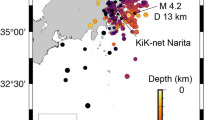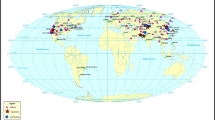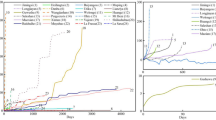Abstract
At present, the seismic exploration of mineral resources such as unknown oil fields and natural gas fields has become the focus and difficulty. The Tarim Oilfield located in the desert area of northwest China has many uncertainties due to complicated geological structure and resource burial conditions. And the seismic record collected carries various noises, especially random noise with complex features, including non-stationary, non-Gaussian, nonlinear and low frequency. The seismic events are contaminated by random noise. Also the effective signal of desert seismic record is in the same frequency band as the random noise. These situations have brought great difficulties in denoising by conventional methods. In this paper, a noise reduction framework based on linear discriminant analysis effective signal detection in desert seismic record is proposed to solve this problem. At first, the method utilizes the difference between the effective signals and the noise in the low-dimensional space. The seismic data are divided into the effective signal cluster and the noise cluster. Then, the effective signal is extracted to realize the position of the seismic events. Finally, the conventional filter is matched to obtain better denoising results. The framework is applied to synthetic desert seismic records and real desert seismic records. The experimental results show that denoising capability after detecting effective signals is obviously better than those of conventional denoising methods. The accuracy of the seismic effective signal detection is higher, and the seismic events’ continuity is maintained better.










Similar content being viewed by others
References
Anderson TW (1963) Asymptotic theory for principal component analysis. Ann Math Stat 34(1):122–148
Bandos TV, Bruzzone L, Camps-Valls G (2009) Classification of hyperspectral images with regularized linear discriminant analysis. IEEE Trans Geosci Remote Sens 47(3):862–873
Bednar JB (1983) Applications of median filtering to deconvolution, pulse estimation, and statistical editing of seismic data. Geophysics 48(12):1598–1610
Bonar D, Sacchi M (2012) Denoising seismic data using the nonlocal means algorithm. Geophysics 77(1):5
Canales LL (1984) Random noise reduction. Seg Tech Program Expand Abstr 3(1):329
Fisher RA (1936) The use of multiple measurements in taxonomic problems. Ann Hum Genet 7(2):179–188
Fukunaga K (1990) Introduction to statistical pattern classification. Academic Press, London
Hartigan JA, Wong MA (1979) Algorithm as 136: a k-means clustering algorithm. J R Stat Soc 28(1):100–108
Li GH, Li Y (2016) Random noise of seismic exploration in desert modeling and its applying in noise attenuation. Chin J Geophys 59:682–692
Li G, Li Y, Yang B (2017) Seismic exploration random noise on land: modeling and application to noise suppression. IEEE Trans Geosci Remote Sens 55(8):4668–4681
Meng Y, Li Y, Zhang C, Zhao H (2017) A time picking method based on spectral multimanifold clustering in microseismic data. IEEE Geosci Remote Sens Lett 14(8):1273–1277
Neelamani R, Baumstein AI, Gillard DG, Hadidi MT, Soroka WL (2008) Coherent and random noise attenuation using the curvelet transform. Lead Edge 27(2):240–248
Shang S, Han LG, Lv QT, Tan CQ (2013) Seismic random noise suppression using an adaptive nonlocal means algorithm. Appl Geophys 10(1):33–40
Stewart RR, Schieck DG (1989) 3-d f-k filtering. Seg Tech Program Expand Abstr 8(1):1123
Tipping ME, Bishop CM (2014) Mixtures of probabilistic principal component analyzers. Neural Comput 11(2):443–482
Yang J, Frangi AF, Yang JY, Zhang D, Jin Z (2005) Kpca plus lda: a complete kernel fisher discriminant framework for feature extraction and recognition. IEEE Trans Pattern Anal Mach Intell 27(2):230–244
Ye J, Janardan R, Li Q, Park H (2006) Feature reduction via generalized uncorrelated linear discriminant analysis. IEEE Trans Knowl Data Eng 18(10):1312–1322
Yu H, Yang J (2001) A direct lda algorithm for high-dimensional data—with application to face recognition. Pattern Recognit 34(10):2067–2070
Zhong T, Li Y, Wu N, Nie P, Yang B (2015a) A study on the stationarity and Gaussianity of the background noise in land-seismic prospecting. Geophysics 80(4):V67–V82
Zhong T, Yue L, Ning W, Nie P, Yang B (2015b) Statistical properties of the random noise in seismic data. J Appl Geophys 118:84–91
Acknowledgements
This work is supported by the National Natural Science Foundation of China (Grants 41730422 and 41774117).
Author information
Authors and Affiliations
Corresponding author
Rights and permissions
About this article
Cite this article
Ma, H., Yan, J., Li, Y. et al. Desert seismic random noise reduction based on LDA effective signal detection. Acta Geophys. 67, 109–121 (2019). https://doi.org/10.1007/s11600-019-00250-0
Received:
Accepted:
Published:
Issue Date:
DOI: https://doi.org/10.1007/s11600-019-00250-0




